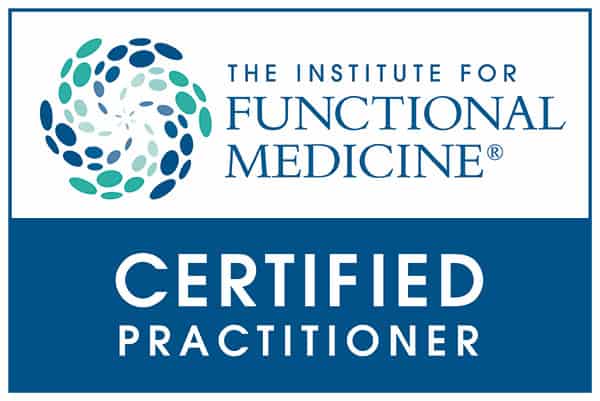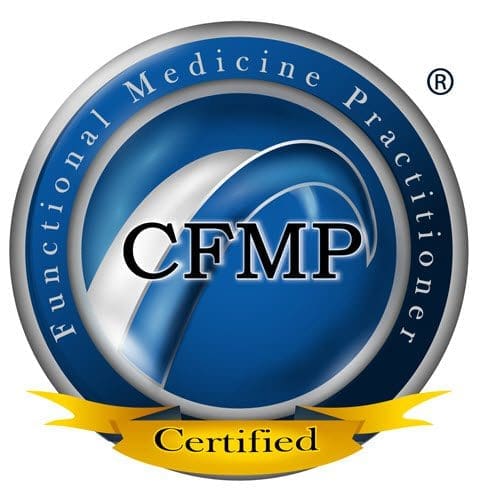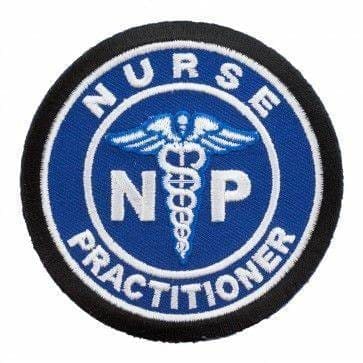Discover effective chiropractic care options for sports injuries & sciatica to support your healing journey.
Contents
Sciatica Pain and Sports Injuries: A Comprehensive Guide to Chiropractic Care and Recovery
Introduction: The Sciatica Struggle and the Sports Connection
Imagine this: you’re sprinting down the soccer field, weaving through defenders like a pro, when suddenly a sharp, electric jolt shoots down your leg. Or maybe you’re just sitting at your desk, minding your own business, and a nagging pain in your lower back decides to throw a party that radiates all the way to your toes. Welcome to the world of sciatica—a condition that can make even the toughest athletes feel like they’ve been tackled by an invisible linebacker. Sciatica isn’t just a pain in the… well, you know where. It’s a complex musculoskeletal issue that can stem from various causes, including sports injuries, and it affects millions of people worldwide.
At El Paso Back Clinic, led by the esteemed Dr. Alexander Jimenez, DC, APRN, FNP-BC, patients find hope through advanced chiropractic care and integrative treatments tailored to alleviate sciatica pain and restore mobility. Whether you’re an athlete sidelined by a sports injury or someone dealing with the aftermath of a car accident, understanding sciatica and its connection to the musculoskeletal system is key to recovery. In this comprehensive guide, we’ll dive into the causes of sciatica, explore how sports injuries contribute to it, and highlight how chiropractic care, combined with non-surgical treatments, can help you get back on your feet. Plus, we’ll sprinkle in a bit of humor to keep things light—because nobody likes a blog post that’s as stiff as a bad back!
What Is Sciatica? Understanding the Basics
Sciatica isn’t just one thing—it’s a symptom of an underlying issue affecting the sciatic nerve, the longest nerve in your body, which runs from your lower back through your hips, buttocks, and down each leg. When this nerve gets irritated or compressed, it can cause pain, numbness, tingling, or weakness that radiates along its path. Think of it like a garden hose with a kink: the water (or in this case, nerve signals) can’t flow properly, and the result is discomfort that can range from mildly annoying to downright debilitating.
Common Symptoms of Sciatica
- Pain: A sharp, burning, or aching sensation that starts in the lower back or buttocks and travels down one leg.
- Numbness or Tingling: That “pins and needles” feeling, like your leg fell asleep but decided to stay that way.
- Weakness: Difficulty moving your leg or foot, making you feel like you’re auditioning for a role as a wobbly penguin.
- One-Sided Symptoms: Sciatica typically affects only one side of the body, though it can occasionally be bilateral (both sides).
Causes of Sciatica
Sciatica can be triggered by various conditions, many of which involve the musculoskeletal system. Some of the most common culprits include:
- Lumbar Disc Herniation: When the soft inner material of a spinal disc bulges or ruptures, it can press on the sciatic nerve roots (Wang et al., 2022).
- Piriformis Syndrome: The piriformis muscle in the buttocks can irritate the sciatic nerve if it becomes tight or inflamed (Hicks et al., 2021).
- Spinal Stenosis: Narrowing of the spinal canal can compress nerve roots, leading to sciatica symptoms.
- Degenerative Arthritis: Wear and tear on the spine can cause bone spurs or disc degeneration, irritating the nerve.
- Trauma or Injury: Sports injuries, car accidents, or even a bad fall can damage the spine or surrounding tissues, contributing to sciatica (El Paso Back Clinic, n.d.).
References
- El Paso Back Clinic. (n.d.). Low back pain & sciatica caused by a broken pelvis. https://elpasobackclinic.com/low-back-pain-sciatica-caused-broken-pelvis/
- Hicks, B. L., Lam, J. C., & Varacallo, M. (2021). Piriformis syndrome: A cause of nondiscogenic sciatica. Current Sports Medicine Reports, 20(2), 97–102. https://pubmed.ncbi.nlm.nih.gov/33560090/
- Wang, Y., Chen, J., & Chen, L. (2022). Association between chiropractic spinal manipulation and lumbar discectomy in adults with lumbar disc herniation and radiculopathy: Retrospective cohort study using United States’ data. BMJ Open, 12(12), e068262. https://pubmed.ncbi.nlm.nih.gov/36523295/
The Musculoskeletal System and Sciatica: A Complex Relationship
The musculoskeletal system—your bones, muscles, ligaments, and tendons—works together like a well-oiled machine to keep you moving. But when one part of this system gets out of whack, it can throw everything off balance, including the sciatic nerve. Let’s break down how the musculoskeletal system plays a role in sciatica and why sports injuries can be a major contributing factor.
How the Musculoskeletal System Contributes to Sciatica
The sciatic nerve is surrounded by muscles, bones, and connective tissues, all of which can influence its function. Here’s how:
- Spinal Misalignment: When vertebrae in the lumbar spine are misaligned, they can compress nerve roots, leading to sciatica. This is often seen in conditions like spondylolisthesis, where one vertebra slips over another.
- Muscle Imbalances: Tight or weak muscles, such as the piriformis or hamstrings, can put pressure on the sciatic nerve or alter spinal alignment.
- Joint Dysfunction: Stiff or hypermobile joints in the spine or pelvis can disrupt normal biomechanics, irritating the nerve.
- Inflammation: Injuries or overuse can cause inflammation in surrounding tissues, which can compress or irritate the sciatic nerve (Jensen et al., 2023).
Sports Injuries and Sciatica: The Connection
Athletes, whether weekend warriors or seasoned pros, are no strangers to musculoskeletal injuries. Sports like football, soccer, running, or even yoga can put significant stress on the body, leading to injuries that may trigger or exacerbate sciatica. Here’s how sports injuries can contribute:
- Direct Trauma: A hard tackle in football or a fall during a basketball game can cause pelvic fractures or spinal injuries, which may compress the sciatic nerve (El Paso Back Clinic, n.d.).
- Overuse Injuries: Repetitive motions, like running or cycling, can lead to muscle tightness or inflammation, such as piriformis syndrome, which irritates the sciatic nerve (Hicks et al., 2021).
- Poor Biomechanics: Improper form during weightlifting or running can strain the spine or pelvis, leading to disc herniation or misalignment.
- Pelvic Injuries: A broken pelvis, as discussed in El Paso Back Clinic’s article, can directly affect the sciatic nerve due to its proximity to the nerve’s path (El Paso Back Clinic, n.d.).
For example, imagine a runner who pushes through a tight hamstring without stretching properly. Over time, this tightness can pull on the pelvis, misalign the spine, and irritate the sciatic nerve. Or picture a soccer player who takes a hard fall, bruising their lower back and causing inflammation that pinches the nerve. These scenarios highlight how sports injuries can set the stage for sciatica.
References
- El Paso Back Clinic. (n.d.). Low back pain & sciatica caused by a broken pelvis. https://elpasobackclinic.com/low-back-pain-sciatica-caused-broken-pelvis/
- Hicks, B. L., Lam, J. C., & Varacallo, M. (2021). Piriformis syndrome: A cause of nondiscogenic sciatica. Current Sports Medicine Reports, 20(2), 97–102. https://pubmed.ncbi.nlm.nih.gov/33560090/
- Jensen, R. K., Kongsted, A., Kjaer, P., & Koes, B. (2023). Surgical versus non-surgical treatment for sciatica: Systematic review and meta-analysis of randomised controlled trials. BMJ, 381, e070730. https://pubmed.ncbi.nlm.nih.gov/37019468/
Sports Injury Rehabilitation- Video
Risk Factors for Sciatica: Why Athletes Are at Risk
Sciatica doesn’t discriminate—it can affect anyone, from desk jockeys to elite athletes. However, certain factors increase the likelihood of developing sciatica, particularly in those who engage in sports. Let’s explore these risk factors and why athletes might be more susceptible.
Key Risk Factors
- Obesity: Excess weight puts extra pressure on the spine, increasing the risk of disc herniation and sciatica (Cao et al., 2021).
- Sedentary Lifestyle: Prolonged sitting or inactivity weakens core muscles, leading to poor spinal support and nerve compression.
- Age: As we age, degenerative changes in the spine, like arthritis or disc wear, become more common, increasing sciatica risk.
- Occupational Hazards: Jobs or activities involving heavy lifting, twisting, or prolonged sitting can strain the spine.
- Sports Injuries: High-impact or repetitive sports activities can cause trauma or overuse injuries, leading to sciatica (El Paso Back Clinic, n.d.).
- Poor Posture: Slouching or improper body mechanics during sports or daily activities can misalign the spine, irritating the sciatic nerve.
Why Athletes Are Vulnerable
Athletes often push their bodies to the limit, which can lead to musculoskeletal issues that trigger sciatica. For instance:
- High-Impact Sports: Football, rugby, or gymnastics involve jarring movements that can stress the spine or pelvis.
- Repetitive Motions: Runners or cyclists may develop muscle imbalances or overuse injuries that affect the sciatic nerve.
- Inadequate Recovery: Skipping rest days or neglecting proper warm-ups and cool-downs can lead to chronic inflammation or injury.
- Improper Equipment: Worn-out running shoes or an ill-fitting bike saddle can alter biomechanics, contributing to sciatica.
Think of an athlete’s body like a finely tuned race car: it performs beautifully until a single misaligned part causes the whole system to sputter. That’s where chiropractic care comes in to realign the wheels and get you back on the track.
References
- Cao, H., Zhang, Z., & Lu, T. (2021). Causal associations of obesity with the intervertebral degeneration, low back pain, and sciatica: A two-sample Mendelian randomization study. Frontiers in Endocrinology, 12, 740746. https://pubmed.ncbi.nlm.nih.gov/34956081/
- El Paso Back Clinic. (n.d.). Low back pain & sciatica caused by a broken pelvis. https://elpasobackclinic.com/low-back-pain-sciatica-caused-broken-pelvis/
Chiropractic Care: A Non-Surgical Solution for Sciatica
Chiropractic care is like the superhero of non-surgical treatments for sciatica—it swoops in to save the day without the need for scalpels or long recovery times. At El Paso Back Clinic, Dr. Alexander Jimenez and his team use a variety of chiropractic techniques to address the root causes of sciatica, helping patients regain mobility and reduce pain.
How Chiropractic Care Helps
Chiropractic care focuses on restoring proper alignment and function to the musculoskeletal system, which can alleviate pressure on the sciatic nerve. Here’s how it works:
- Spinal Adjustments: Gentle manipulations correct misalignments in the spine, reducing nerve compression and improving biomechanics (Wang et al., 2022).
- Soft Tissue Therapy: Techniques like myofascial release or trigger point therapy relax tight muscles, such as the piriformis, that may be irritating the nerve (Hicks et al., 2021).
- Joint Mobilization: Restoring mobility to stiff joints in the spine or pelvis can reduce strain on the sciatic nerve.
- Postural Correction: Chiropractors assess and correct posture issues that contribute to sciatica, ensuring long-term relief.
Benefits of Chiropractic Care for Sciatica
- Pain Reduction: By addressing the root cause, chiropractic care can significantly reduce sciatica pain without relying on medications.
- Improved Mobility: Restoring joint and muscle function helps patients move more freely, whether they’re athletes or office workers.
- Non-Invasive: Unlike surgery, chiropractic care avoids the risks and recovery time associated with invasive procedures (Jensen et al., 2023).
- Holistic Approach: Chiropractors often combine adjustments with lifestyle advice, exercises, and nutrition to support overall health.
Dr. Jimenez’s approach at El Paso Back Clinic is particularly effective because it integrates advanced diagnostic tools, like imaging and biomechanical assessments, to pinpoint the exact cause of sciatica. This precision ensures that treatments are tailored to each patient’s unique needs, whether their sciatica stems from a sports injury, a car accident, or a broken pelvis.
References
- Hicks, B. L., Lam, J. C., & Varacallo, M. (2021). Piriformis syndrome: A cause of nondiscogenic sciatica. Current Sports Medicine Reports, 20(2), 97–102. https://pubmed.ncbi.nlm.nih.gov/33560090/
- Jensen, R. K., Kongsted, A., Kjaer, P., & Koes, B. (2023). Surgical versus non-surgical treatment for sciatica: Systematic review and meta-analysis of randomised controlled trials. BMJ, 381, e070730. https://pubmed.ncbi.nlm.nih.gov/37019468/
- Wang, Y., Chen, J., & Chen, L. (2022). Association between chiropractic spinal manipulation and lumbar discectomy in adults with lumbar disc herniation and radiculopathy: Retrospective cohort study using United States’ data. BMJ Open, 12(12), e068262. https://pubmed.ncbi.nlm.nih.gov/36523295/
Integrative Non-Surgical Treatments for Sciatica
While chiropractic care is a cornerstone of sciatica treatment, combining it with other non-surgical therapies can enhance outcomes, especially for athletes recovering from sports injuries. Dr. Jimenez and his team at El Paso Back Clinic incorporate a variety of integrative approaches to address sciatica and its overlapping symptoms.
Complementary Therapies
- Acupuncture: This ancient practice involves inserting thin needles into specific points to reduce pain and inflammation. Studies show acupuncture can be effective for sciatica, particularly when tailored to neuropathic pain mechanisms (Li et al., 2020; Zhang et al., 2019).
- Massage Therapy: Therapeutic massage can relax tight muscles, improve circulation, and reduce inflammation, complementing chiropractic adjustments.
- Physical Therapy: Targeted exercises strengthen core muscles, improve flexibility, and correct biomechanical issues, reducing sciatica symptoms.
- Nutritional Support: A diet rich in anti-inflammatory foods, like omega-3s and antioxidants, can support recovery by reducing systemic inflammation (El Paso Back Clinic, n.d.).
- Durable Medical Equipment: Braces or supports can stabilize the spine or pelvis during recovery, especially after injuries like a broken pelvis.
Acupuncture for Sciatica: A Closer Look
Acupuncture deserves a special mention because of its growing evidence base. Research suggests that acupuncture can modulate pain pathways and reduce inflammation, making it a valuable tool for sciatica management. For example, a randomized controlled pilot study found that acupuncture provided significant pain relief for sciatica patients, with effects varying based on the “dose” of treatment (Zhang et al., 2019). By combining acupuncture with chiropractic care, patients can address both the structural and neurological components of sciatica.
The Role of Nutrition
Nutrition plays a critical role in musculoskeletal recovery. After a sports injury or accident, inflammation can exacerbate sciatica symptoms. Dr. Jimenez emphasizes a diet that includes:
- Anti-Inflammatory Foods: Fish, nuts, leafy greens, and berries to reduce inflammation.
- Hydration: Proper fluid intake to support tissue repair and disc health.
- Supplements: Omega-3 fatty acids or turmeric may help manage inflammation, though patients should consult a professional before starting supplements.
By integrating these therapies, El Paso Back Clinic creates a comprehensive treatment plan that addresses the multifaceted nature of sciatica, helping patients recover faster and more effectively.
References
- El Paso Back Clinic. (n.d.). Low back pain & sciatica caused by a broken pelvis. https://elpasobackclinic.com/low-back-pain-sciatica-caused-broken-pelvis/
- Li, Q., Liu, R., & Zhao, J. (2020). The management of sciatica by acupuncture: An expert consensus using the improved Delphi survey. Evidence-Based Complementary and Alternative Medicine, 2020, 8565987. https://pubmed.ncbi.nlm.nih.gov/32595769/
- Zhang, W., Liu, Y., & Yu, L. (2019). Therapeutic efficacy and the impact of the “dose” effect of acupuncture to treat sciatica: A randomized controlled pilot study. Journal of Pain Research, 12, 351–360. https://pubmed.ncbi.nlm.nih.gov/30666157/
Dr. Alexander Jimenez: A Leader in Personal Injury Care in El Paso
In El Paso, Dr. Alexander Jimenez stands out as a distinguished practitioner for victims of personal injuries, including those with sciatica caused by sports injuries or motor vehicle accidents. With his credentials as a Doctor of Chiropractic (DC), Advanced Practice Registered Nurse (APRN), and Family Nurse Practitioner-Board Certified (FNP-BC), Dr. Jimenez brings a unique blend of expertise to patient care. His practice at El Paso Back Clinic is renowned for its integrative approach, combining advanced diagnostics with holistic treatments.
Dr. Jimenez’s Approach to Personal Injury Cases
Personal injury cases, such as those involving car accidents or sports injuries, often require meticulous documentation and medical expertise to ensure patients receive proper care and legal support. Dr. Jimenez excels in this area by:
- Advanced Imaging: Using X-rays, MRIs, or CT scans to identify structural issues like disc herniation or pelvic fractures that may cause sciatica (El Paso Back Clinic, n.d.).
- Diagnostic Evaluations: Conducting thorough physical exams and biomechanical assessments to pinpoint the root cause of pain.
- Dual-Scope Procedures: Combining chiropractic adjustments with medical interventions, such as injections or referrals to specialists, when needed.
- Legal Liaison: Providing detailed medical reports and collaborating with legal teams to document injuries accurately, ensuring patients receive fair compensation.
Dr. Jimenez’s ability to bridge medical and legal needs makes him a trusted advocate for personal injury victims in El Paso. His work ensures that patients not only recover physically but also have the documentation needed to navigate insurance claims or legal proceedings.
References
- El Paso Back Clinic. (n.d.). Low back pain & sciatica caused by a broken pelvis. https://elpasobackclinic.com/low-back-pain-sciatica-caused-broken-pelvis/
- Jimenez, A. (n.d.). LinkedIn profile. https://www.linkedin.com/in/dralexjimenez/
Small Changes, Big Impact: Lifestyle Tips for Sciatica Prevention
Preventing sciatica or managing its symptoms doesn’t always require major interventions. Dr. Jimenez emphasizes that small, intentional changes in daily routines can make a significant difference. Here are some practical tips, infused with a touch of humor to keep you smiling:
- Stay Active, But Smart: Regular exercise strengthens core muscles, but don’t go full Hulk mode without warming up. Gentle stretches before and after workouts can prevent muscle tightness.
- Mind Your Posture: Slouching is the sciatic nerve’s archenemy. Sit up straight, like you’re trying to impress your high school crush at a reunion.
- Ergonomic Workspace: Adjust your chair and desk to support your spine. Think of your office chair as a throne, not a torture device.
- Stretch Like a Cat: Incorporate daily stretches for your hamstrings, piriformis, and lower back. Channel your inner feline and make stretching a ritual.
- Stay Hydrated: Your spinal discs love water like a plant loves sunlight. Drink up to keep them plump and healthy.
- Proper Footwear: Athletes, ditch those worn-out sneakers. Good shoes are like loyal friends—they support you through every step.
By making these small tweaks, you can reduce the risk of sciatica and support your musculoskeletal health, whether you’re hitting the gym or just navigating daily life.
References
- El Paso Back Clinic. (n.d.). Low back pain & sciatica caused by a broken pelvis. https://elpasobackclinic.com/low-back-pain-sciatica-caused-broken-pelvis/
The Role of Advanced Diagnostics in Sciatica Treatment
One of Dr. Jimenez’s strengths is his use of advanced diagnostics to create personalized treatment plans. Sciatica can have multiple causes, and pinpointing the exact source is crucial for effective treatment. At El Paso Back Clinic, patients benefit from:
- Imaging Studies: X-rays, MRIs, or CT scans to visualize disc herniation, spinal stenosis, or pelvic injuries.
- Electromyography (EMG): Tests to assess nerve function and identify compression sites.
- Biomechanical Assessments: Evaluating posture, gait, and joint mobility to identify underlying dysfunctions.
These tools allow Dr. Jimenez to develop targeted interventions, whether it’s chiropractic adjustments, acupuncture, or physical therapy, ensuring that patients receive the most effective care for their specific condition.
References
- El Paso Back Clinic. (n.d.). Low back pain & sciatica caused by a broken pelvis. https://elpasobackclinic.com/low-back-pain-sciatica-caused-broken-pelvis/
Sciatica and Sports Injuries: A Case Study
To bring this all together, let’s consider a hypothetical case study inspired by real-world scenarios at El Paso Back Clinic. Meet Sarah, a 30-year-old avid runner who developed sciatica after a minor fall during a trail race. The impact caused a pelvic misalignment, which irritated her sciatic nerve, leading to burning pain down her left leg. Initially, Sarah thought it was just a pulled muscle, but the pain persisted, affecting her ability to run or even sit comfortably.
Sarah visited El Paso Back Clinic, where Dr. Jimenez conducted a thorough evaluation. An X-ray revealed a subtle pelvic tilt, and a physical exam confirmed piriformis tightness. Dr. Jimenez developed a treatment plan that included:
- Chiropractic Adjustments: To correct pelvic and spinal alignment.
- Acupuncture: To reduce inflammation and modulate pain signals.
- Physical Therapy: To strengthen core muscles and improve running form.
- Nutritional Counseling: To support tissue repair with an anti-inflammatory diet.
Within weeks, Sarah’s pain decreased significantly, and she was back to running with proper form and better shoes. Her case highlights how sports injuries can trigger sciatica and how an integrative approach can lead to lasting recovery.
References
- El Paso Back Clinic. (n.d.). Low back pain & sciatica caused by a broken pelvis. https://elpasobackclinic.com/low-back-pain-sciatica-caused-broken-pelvis/
Conclusion: A Serious Note on Sciatica Recovery
Sciatica can be a challenging condition, but with the right care, recovery is within reach. At El Paso Back Clinic, Dr. Alexander Jimenez and his team offer a beacon of hope for those struggling with sciatica, whether it’s caused by sports injuries, car accidents, or other musculoskeletal issues. By combining chiropractic care, acupuncture, physical therapy, and nutritional support, patients can address the root causes of their pain and regain their quality of life. Dr. Jimenez’s expertise in personal injury cases also ensures that patients receive the medical and legal support they need to navigate complex situations.
Disclaimer: This blog post is intended for informational purposes only and should not be considered medical advice. Always consult a qualified healthcare professional, such as Dr. Alexander Jimenez at El Paso Back Clinic, for a proper diagnosis and treatment plan tailored to your specific condition. Sciatica and musculoskeletal injuries require individualized care, and self-treatment without professional guidance may worsen symptoms.
References
- Cao, H., Zhang, Z., & Lu, T. (2021). Causal associations of obesity with the intervertebral degeneration, low back pain, and sciatica: A two-sample Mendelian randomization study. Frontiers in Endocrinology, 12, 740746. https://pubmed.ncbi.nlm.nih.gov/34956081/
- El Paso Back Clinic. (n.d.). Low back pain & sciatica caused by a broken pelvis. https://elpasobackclinic.com/low-back-pain-sciatica-caused-broken-pelvis/
- Hicks, B. L., Lam, J. C., & Varacallo, M. (2021). Piriformis syndrome: A cause of nondiscogenic sciatica. Current Sports Medicine Reports, 20(2), 97–102. https://pubmed.ncbi.nlm.nih.gov/33560090/
- Jensen, R. K., Kongsted, A., Kjaer, P., & Koes, B. (2023). Surgical versus non-surgical treatment for sciatica: Systematic review and meta-analysis of randomised controlled trials. BMJ, 381, e070730. https://pubmed.ncbi.nlm.nih.gov/37019468/
- Li, Q., Liu, R., & Zhao, J. (2020). The management of sciatica by acupuncture: An expert consensus using the improved Delphi survey. Evidence-Based Complementary and Alternative Medicine, 2020, 8565987. https://pubmed.ncbi.nlm.nih.gov/32595769/
- Vickers, A. J., & Vertosick, E. A. (2021). Extra-spinal sciatica and sciatica mimics: A scoping review. Pain Medicine, 22(1), 70–81. https://pubmed.ncbi.nlm.nih.gov/32951055/
- Wang, Y., Chen, J., & Chen, L. (2022). Association between chiropractic spinal manipulation and lumbar discectomy in adults with lumbar disc herniation and radiculopathy: Retrospective cohort study using United States’ data. BMJ Open, 12(12), e068262. https://pubmed.ncbi.nlm.nih.gov/36523295/
- Zhang, W., Liu, Y., & Yu, L. (2019). Therapeutic efficacy and the impact of the “dose” effect of acupuncture to treat sciatica: A randomized controlled pilot study. Journal of Pain Research, 12, 351–360. https://pubmed.ncbi.nlm.nih.gov/30666157/
General Disclaimer, Licenses and Board Certifications *
Professional Scope of Practice *
The information herein on "Sport Injuries & Sciatica: Chiropractic Care Overview" is not intended to replace a one-on-one relationship with a qualified health care professional or licensed physician and is not medical advice. We encourage you to make healthcare decisions based on your research and partnership with a qualified healthcare professional.
Blog Information & Scope Discussions
Welcome to El Paso's Premier Wellness and Injury Care Clinic & Wellness Blog, where Dr. Alex Jimenez, DC, FNP-C, a Multi-State board-certified Family Practice Nurse Practitioner (FNP-BC) and Chiropractor (DC), presents insights on how our multidisciplinary team is dedicated to holistic healing and personalized care. Our practice aligns with evidence-based treatment protocols inspired by integrative medicine principles, similar to those on this site and on our family practice-based chiromed.com site, focusing on naturally restoring health for patients of all ages.
Our areas of multidisciplinary practice include Wellness & Nutrition, Chronic Pain, Personal Injury, Auto Accident Care, Work Injuries, Back Injury, Low Back Pain, Neck Pain, Migraine Headaches, Sports Injuries, Severe Sciatica, Scoliosis, Complex Herniated Discs, Fibromyalgia, Chronic Pain, Complex Injuries, Stress Management, Functional Medicine Treatments, and in-scope care protocols.
Our information scope is multidisciplinary, focusing on musculoskeletal and physical medicine, wellness, contributing etiological viscerosomatic disturbances within clinical presentations, associated somato-visceral reflex clinical dynamics, subluxation complexes, sensitive health issues, and functional medicine articles, topics, and discussions.
We provide and present clinical collaboration with specialists from various disciplines. Each specialist is governed by their professional scope of practice and their jurisdiction of licensure. We use functional health & wellness protocols to treat and support care for musculoskeletal injuries or disorders.
Our videos, posts, topics, and insights address clinical matters and issues that are directly or indirectly related to our clinical scope of practice.
Our office has made a reasonable effort to provide supportive citations and has identified relevant research studies that support our posts. We provide copies of supporting research studies upon request to regulatory boards and the public.
We understand that we cover matters that require an additional explanation of how they may assist in a particular care plan or treatment protocol; therefore, to discuss the subject matter above further, please feel free to ask Dr. Alex Jimenez, DC, APRN, FNP-BC, or contact us at 915-850-0900.
We are here to help you and your family.
Blessings
Dr. Alex Jimenez DC, MSACP, APRN, FNP-BC*, CCST, IFMCP, CFMP, ATN
email: coach@elpasofunctionalmedicine.com
Multidisciplinary Licensing & Board Certifications:
Licensed as a Doctor of Chiropractic (DC) in Texas & New Mexico*
Texas DC License #: TX5807, Verified: TX5807
New Mexico DC License #: NM-DC2182, Verified: NM-DC2182
Multi-State Advanced Practice Registered Nurse (APRN*) in Texas & Multi-States
Multi-state Compact APRN License by Endorsement (42 States)
Texas APRN License #: 1191402, Verified: 1191402 *
Florida APRN License #: 11043890, Verified: APRN11043890 *
License Verification Link: Nursys License Verifier
* Prescriptive Authority Authorized
ANCC FNP-BC: Board Certified Nurse Practitioner*
Compact Status: Multi-State License: Authorized to Practice in 40 States*
Graduate with Honors: ICHS: MSN-FNP (Family Nurse Practitioner Program)
Degree Granted. Master's in Family Practice MSN Diploma (Cum Laude)
Dr. Alex Jimenez, DC, APRN, FNP-BC*, CFMP, IFMCP, ATN, CCST
My Digital Business Card
Licenses and Board Certifications:
DC: Doctor of Chiropractic
APRNP: Advanced Practice Registered Nurse
FNP-BC: Family Practice Specialization (Multi-State Board Certified)
RN: Registered Nurse (Multi-State Compact License)
CFMP: Certified Functional Medicine Provider
MSN-FNP: Master of Science in Family Practice Medicine
MSACP: Master of Science in Advanced Clinical Practice
IFMCP: Institute of Functional Medicine
CCST: Certified Chiropractic Spinal Trauma
ATN: Advanced Translational Neutrogenomics
Memberships & Associations:
TCA: Texas Chiropractic Association: Member ID: 104311
AANP: American Association of Nurse Practitioners: Member ID: 2198960
ANA: American Nurse Association: Member ID: 06458222 (District TX01)
TNA: Texas Nurse Association: Member ID: 06458222
NPI: 1205907805
| Primary Taxonomy | Selected Taxonomy | State | License Number |
|---|---|---|---|
| No | 111N00000X - Chiropractor | NM | DC2182 |
| Yes | 111N00000X - Chiropractor | TX | DC5807 |
| Yes | 363LF0000X - Nurse Practitioner - Family | TX | 1191402 |
| Yes | 363LF0000X - Nurse Practitioner - Family | FL | 11043890 |








